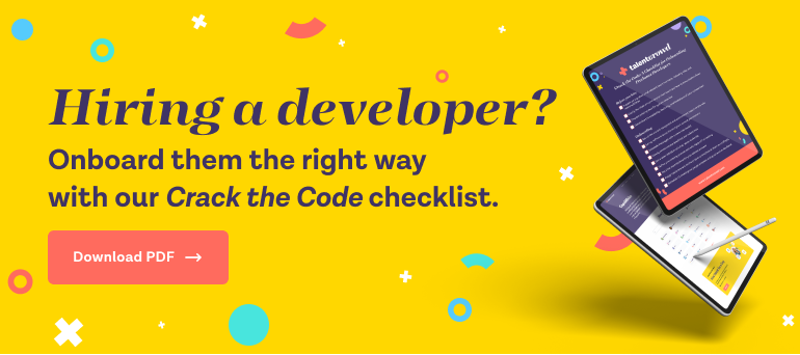When you're starting a software development project, where do you begin? The first step is determining how to approach it as a team. It's an important decision that affects all aspects of the project, and most teams will choose between two main development methodologies. Put simply, software development methodology is the manner in which the work is organized and executed.
Two main methodologies are agile and waterfall. They are both popular and proven, but entirely different from one another. The biggest difference is that agile is concurrent and focuses on flexibility, while waterfall is sequential and focuses on structure.
Each project management methodology is better suited for different projects depending on the circumstances. There are strengths and weaknesses to both, and they're each reliable in their own way in achieving a final product.
Continue reading for a comprehensive guide to agile vs waterfall methodologies so you can make an informed decision about which one is best for your next software development project.
The Agile Methodology
The Agile method is the most common methodology among development teams. In an online survey of 601 IT professionals and software developers, two-thirds report that they primarily use an agile method.
This methodology is an iterative and team-based approach to the development process where teams work simultaneously on different phases. Development and testing are done concurrently. It's a fluid and adaptable method where teams work in sprints rather than following a scheduled timeline. Each sprint has a defined duration, usually lasting a few weeks, and a goal for deliverables to be completed.
After each sprint is completed, feedback received from the client about the previous phase is used to determine the next. The plan adapts as progress is made on the project. There is a high level of customer involvement, especially during the review process at the end of every sprint. Because there is continuous delivery, there are early and frequent opportunities for the development team, project manager, and customer to make decisions and change the project direction, which is why agile methodology values flexibility and teamwork.
Advantages of the Agile Methodology
Client-Focused
One of the most attractive agile development benefits is frequent and continuous customer feedback. This method is centered on the client, which gives them a sense of ownership and involvement as well as a higher chance of customer satisfaction.
Flexibility
Another positive aspect of customer involvement is the adaptability it produces. Because progress and deliverables are shared often, the agile team can easily pivot and shift directions if the customer wants to make changes. This is not possible if only the final product is shared.
TeamWork
In the agile model, there is a high level of team collaboration. Agile team members work closely together to assess and adjust the project. They're self-directed and have more influence on the next phase than project managers. Working simultaneously in sprints with short timelines, teams are more likely to be motivated and productive.
Quality
Since development and testing are done at the same time, quality is assured throughout the entire agile project. When the project is complete, there is less likelihood of having to go back to fix bugs and issues. Any problems can be resolved early on during the continuous review process.
Limitations of the Agile Methodology
Overlap
A drawback of the agile approach is the potential for overlap or unnecessary effort. Because team members work on multiple phases at once, strong, constant communication is crucial. If there is any misunderstanding or a lack of clarity on direction, the process can quickly get messy and disconnected.
Timeline
Since agile is a flexible method, it can be difficult to determine a set timeline. Even when a timeline is established, it's susceptible to change depending on how much refactoring occurs after each sprint.
Cost
Another downfall of the agile methodology's adaptability is the cost of implementation. The budget is subject to change, especially when user feedback results in additional features and extended timelines.
The Waterfall Methodology
Waterfall methodology is the traditional approach to software development. Unlike agile, it's a linear process with a fixed timeline. The start and end of development projects are clearly mapped out along with every step in between. Each phase must be completed and approved before the next phase can begin. It's a straightforward and sequential design process.
In waterfall project management, the software development team usually follows a set order of distinct phases that looks something like this:
- Conception phase: The first step to the waterfall model is brainstorming about what they will design and why.
- Analysis phase: This stage involves the team gathering information, researching project requirements, and planning the entirety of the project.
- Design phase: Next, the development team builds out the project and determines how it will work.
- Construction phase: This is when the software development process truly begins with coding and integrating units according to the set plan and project timeline.
- Testing phase: In this phase, the software is tested system-wide and bugs or errors are corrected to ensure a quality final product.
- Deployment phase: The final step is to deliver the finished product to the customer to be launched.
Clients are rarely involved during the software development process with the waterfall approach. Once the goal is established and the project development has begun, their input is not needed except for scheduled check-ins until it's completed.
Advantages of the Waterfall Methodology
Documentation
A significant benefit of the waterfall model is that establishing a concrete plan from the beginning and documenting each step means that progress is easily measured. The full scope and structure of the project are known in advance and simple to execute.
Hands-Off
With the waterfall method, clients usually have a limited presence. The majority of the software development process is overseen by the project manager who ensures everything goes according to plan. Scheduled check-ins can provide customers with updates as progress is made.
Cost
Because the waterfall model is structured and scheduled, it allows for a set budget. Its lack of flexibility means that the budget is generally fixed.
Limitations of the Waterfall Methodology
Inflexibility
The rigid structure of the waterfall approach can be a downfall just as much as it is a benefit. If planning is not thorough enough developers may hit a roadblock, or customers may not have a clear vision for their project. If either of these happens, making changes can be costly and difficult to make.
Time
Because progressing to each phase depends on the completion of another, the process can be long lasting. The timeline for project completion is usually set, but it can be far off in the future.
Testing
In the waterfall model, testing begins after the building is complete. This inevitably means there will be flaws. Issues with an early phase may not arise until the end, which would mean going back through each phase to see where the mistake was made and find what other errors it caused.
How to Choose the Right Methodology for Your Project
There is a reason why the agile and waterfall methodologies are the most well-known project management approaches. While completely different from each other, they are both dependable and effective. The methodology you choose ultimately depends on the individual project and circumstances.
There are a few factors to consider that will help you to make the right decision about which project management approach to follow:
- Are there strict requirements and regulations for the project? Is there a clear, concrete goal and a specified timeline? If so, waterfall methodology is better suited for this. A set structure and predictable procedures will ensure that all requirements are met.
- Does the outcome require testing and research? Is there a need for flexibility and client involvement? For this, an agile approach would be more successful.
- In some situations, it's achievable to use a hybrid approach and combine both agile and waterfall methodologies. For instance, it could be beneficial to take the structured planning process from the waterfall method and combine it with sprints to produce deliverables from the agile model. Or, it may be helpful to use agile's heavy customer involvement during waterfall projects. All software development projects require unique strategizing to ensure success, and pairing waterfall and agile methodologies may be the right solution.
No matter which development methodology you choose, having the right team of developers is important for implementing it well. Partnering with Talentcrowd for your projects gives you immediate access to expertise and a skilled development team that can fulfill its requirements. All developers with Talentcrowd are outsourced, fully remote, and hand-picked for your business to ensure that they're the perfect fit for your software development tasks. Whether you're looking for a full-time team to follow your waterfall approach from start to finish, or just need assistance for one sprint in an agile project, Talentcrowd has the verified talent you're looking for.
To Summarize
There is a reason why agile and waterfall are the two most well-known software development methodologies. They are both equally effective depending on the project. Choosing the right development methodology is a critical first step of project development, and hopefully, this article serves as a helpful resource and guide for selecting between agile vs waterfall.
If you are seeking qualified, capable developers, consider partnering with Talentcrowd for a development team that will expertly integrate into the best methodology for your project.



.jpg?width=352&name=pexels-cottonbro-5989933(1).jpg)
